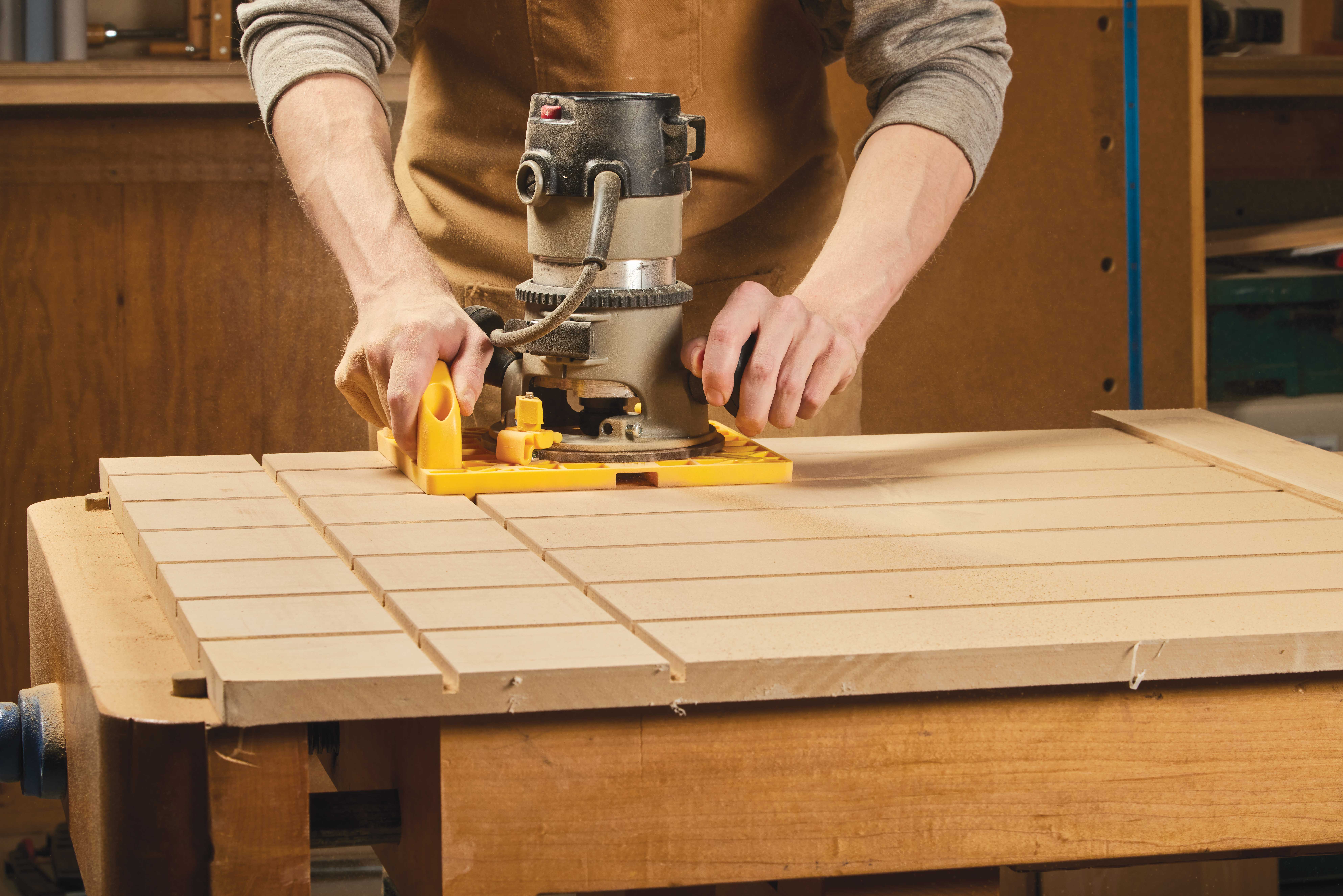GRID ROUTER GUIDE
As I mentioned earlier in this article, the MatchFit line of products from MicroJig revolves around the use of dovetail tracks. I’ve been a fan of this design, as they work well for a variety of operations, from handheld routing to table saw jigs. However, they do require one to have dovetail tracks in the first place, which is where the guide you see here comes in. This guide is made to attach to baseplates that accept Porter-Cable style bushings.
As you can see at right below, a cleat along the bottom of the guide allows it to follow the edge of a workpiece and the subsequent slots it routs. Using this to make a worksurface or spoilboard (like you see below and on pages 22 and 23) is a simple, two-step process.
RELIEF SLOT.
Using this guide begins with the relief bit. This bit clears out most of the waste, providing a slot for the cleat to follow as you make the grid while also making it easier for the dovetail bit to cut a clean slot.
After chucking in the relief bit and attaching your router to the guide, you’ll start by making one pass with the cleat following the edge of the workpiece. After this first cut, reposition the router and guide to have the cleat follow the slot you just made.
This process is repeated across the workpiece, and, once you’ve finished one direction, you’ll rotate the board and repeat to create the grid (middle photo).
DOVETAILING.
Once you’ve created the grid, the next step is to expand those slots into dovetail tracks. Remove the router from the base and guide, chuck in the dovetail bit, reattach the base, then begin routing in the opposite order you made the slots. The reason for this is that the dovetail bit slightly widens the relief slot, meaning you’ll need to have the cleat in a relief slot while routing to maintain the same distance between the cleat and the bit for each cut.
In my opinion, this grid router guide is an excellent addition to MicroJig’s MatchFit lineup. While they offer the dovetail bit to match their hardware separately, the guide makes creating a surface for their hardware far easier. By cutting the grid into a sheet of MDF, I can create an easily replaceable worksurface or spoilboard for my projects in a matter of minutes.
 |
 |
 |
| The router guide registers against the edge of the board for the first cut, then off of the previous slot to ensure consistent spacing. | The grid is first made by routing out slots with the relief bit. This removes most of the waste for a clean dovetail later. | The dovetail bit expands the slot into a dovetail track. You’ll cut this in the opposite order you cut the relief slots. |











